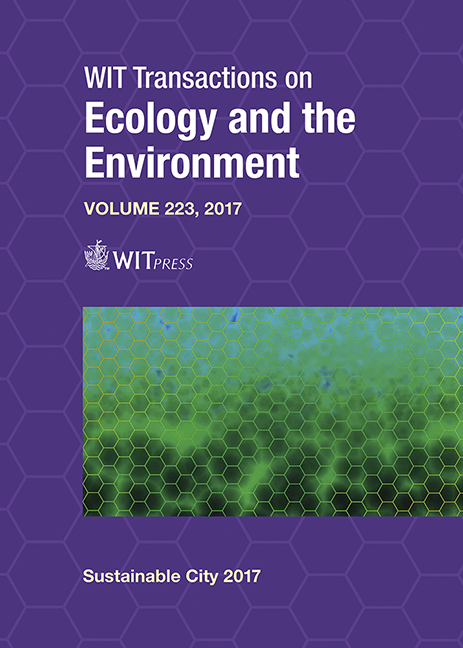LAND-USE PLANNING FOR ZERO-ENERGY-BUILDINGS: COMPARISON OF FOUR HIGH-DENSITY CITIES
Price
Free (open access)
Transaction
Volume
223
Pages
12
Page Range
491 - 502
Published
2017
Size
464 kb
Paper DOI
10.2495/SC170431
Copyright
WIT Press
Author(s)
HSIAO-HUI CHEN, UDO DIETRICH
Abstract
A net approach to Zero-Energy-Building (Net ZEB) requires all energy demand to be met by on-site generation of renewable energy. An off-site ZEB with compensating measure (off-site ZEB_CM) allows off-site land to be used if the energy demand cannot be met due to the urban arrangement of buildings. A method is developed for evaluating the potential and risk of Net ZEB and off-site ZEB_CM in densified urban situations by examining their land-use requirement on- or off-site. Four cities with different climates are modelled: Singapore, Cairo, Beijing and Hamburg. The preliminary results indicate that (1) the rate of change in CM per unit of area of use is not a constant number and varies with numbers of storeys, urban density and climate zone; (2) to save land for the compensating measure, a small number of storeys should be used; (3) to save land in general, high plot ratio should be used. Within a high-density situation, a small number of storeys should be used. This research contributes to the discussion about urban sprawl and compact city by investigating the relationship between urban fabric and energy harvesting. It may encourage the land-use policy makers to include land-use requirement of renewable energy harvesting.
Keywords
zero energy building, compensating areas, urban density, energy demand, land-use planning, low-carbon society





